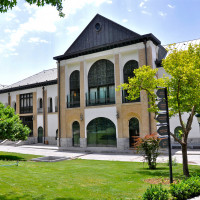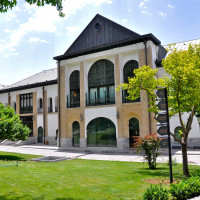There are many natural and historical attractions such as different palaces and museums in Niavaran complex that embrace Sahebqaraneiyeh Palace in the center as a jewel. The remained worthwhile materials in these palaces and museums are related to Qajar and Pahlavi dynasties.
The northern countryside regions of Tehran were firstly considered as a good weather region by Fathlai Shah Qajar. He ordered to build a pleasant garden near Gordevey village. This garden was named Ney Avaran due to its location and gradually converted into Niavaran.
In 1229 SH, Naser al_Din Shah Qajar ordered a palace to be constructed in Niavaran Garden. It was the beginning of 31st year of Naser al-Din Shah reign that the building was finished. Since each 30 years was then called one Qaran (a currency), he named himself Saheb Qaran that means the owner of Qaran (thirty years) and the palace named, in turn, Sahebqaraneih.
The palace includes an alcove, bathroom and mirror room (Jahan Nama) and there is a building close to the palace with various rooms for Naser al-Din Shah’s Harem’s women that was later ruined in time of Pahlavi I.
This palace is also the place of decision making for the important political issues such as signing the Constitutional Decree by Mozaffar al_Din Shah. Besides, it was used as the office of Mohammad Reza Pahlavi from 1346 to 1357 SH.
To visit the palace, you need to go to Bahonar (Niavaran) square in the north of Tehran. The complex is a two-storey building that in spite of being extremely plain in the outside, has a royal and luxurious interior architecture that was designed under the supervision of Farah Diba in time of Pahlavi II. The basement is named Hoz Khaneh (springhouse) that was being used for holding the informal parties of Mohammad Reza Shah and is the most beautiful part of the palace after the mirror hall.
There are paintings remained from the time of Naser al-Din Shah such as Sahebqaranieh’s Spring House by Kamal ol Molk and mirror hall includes secretary’s room of Mohammad Reza Shah, gifts’ room and dentistry room.
You can get familiar with the main part of Iran’s culture, history and politics, in addition, to review the history of two dynasties, Qajar and Pahlavi, through taking a visit to Sahebqaranieh palace.



